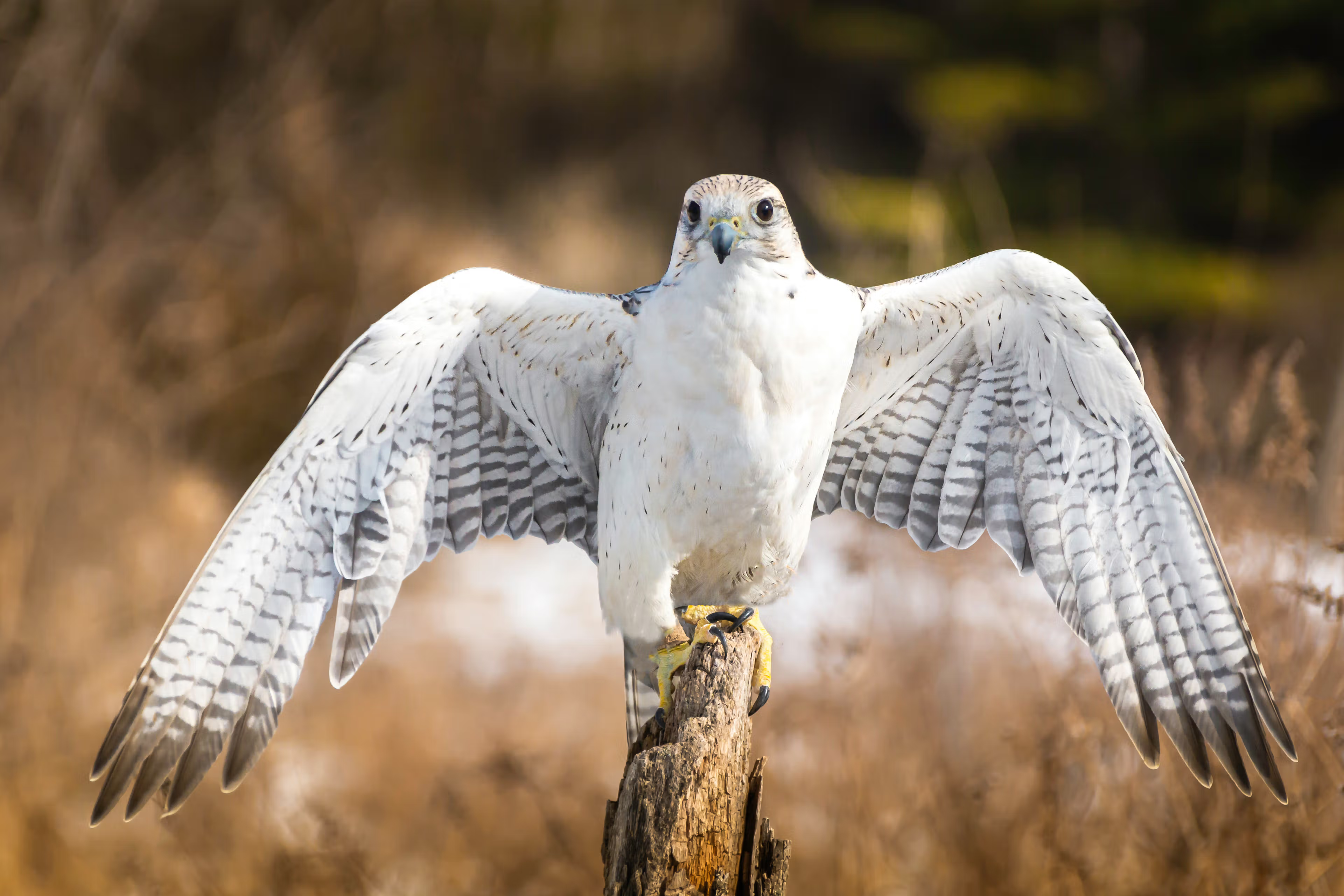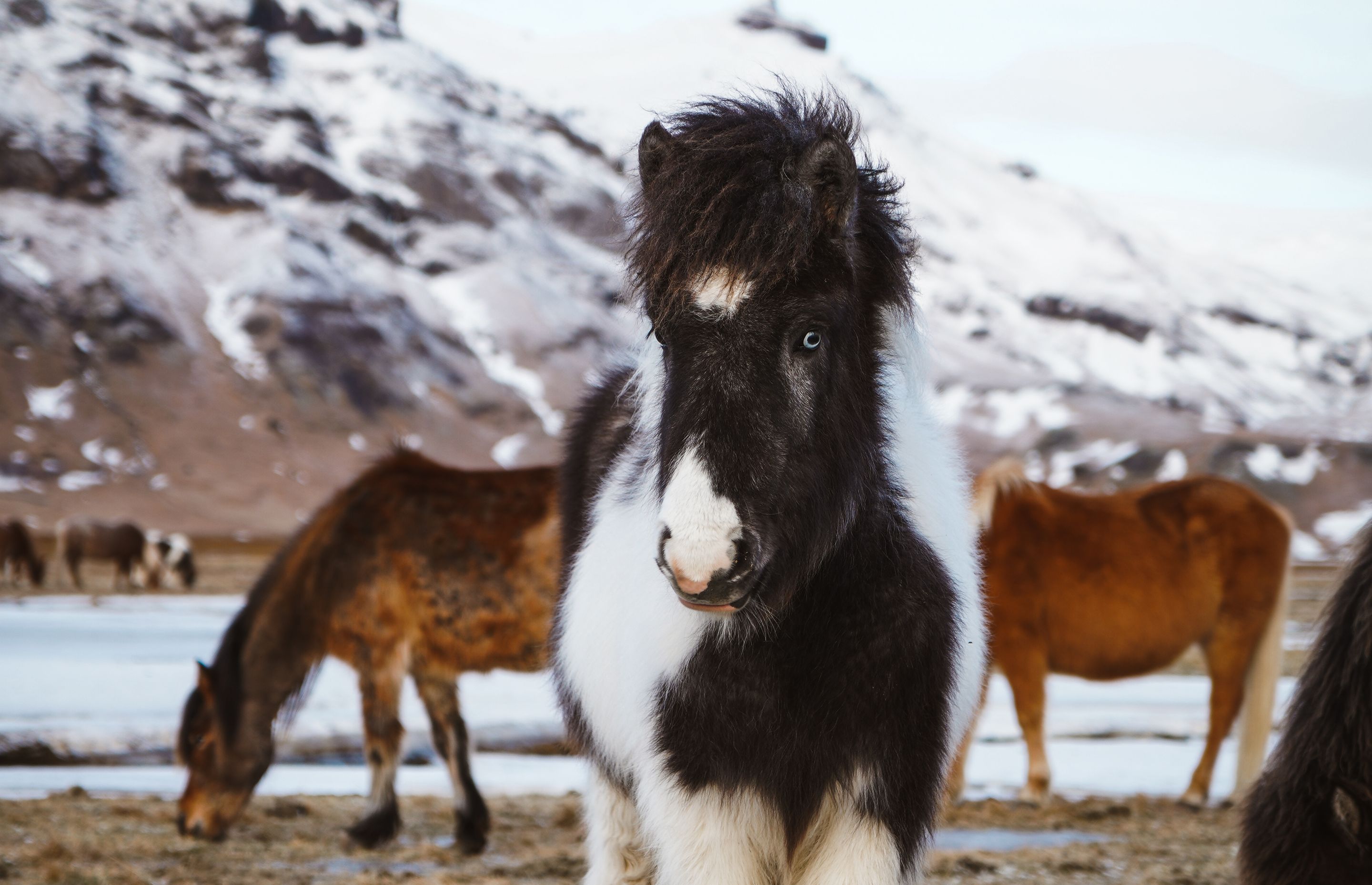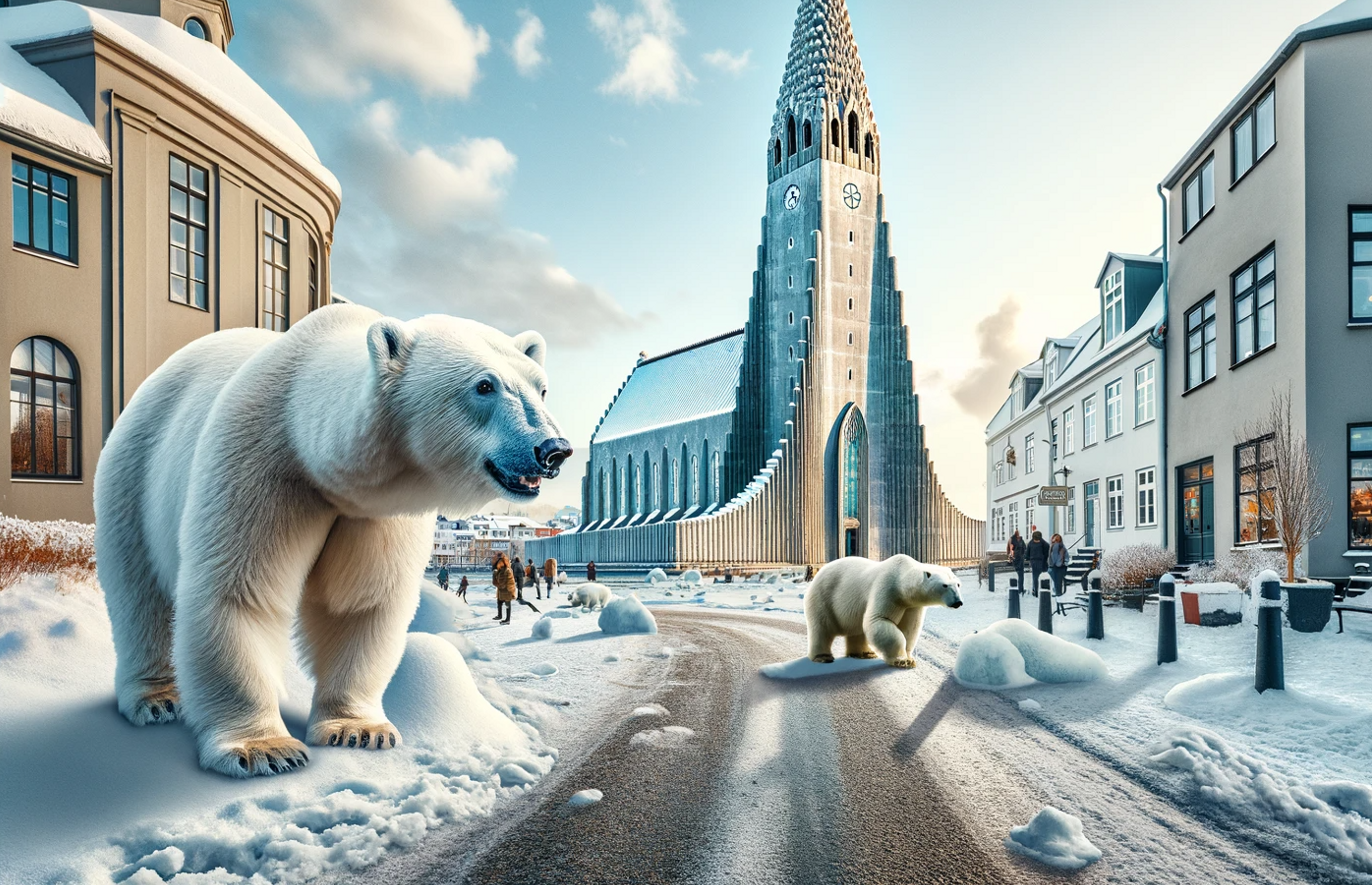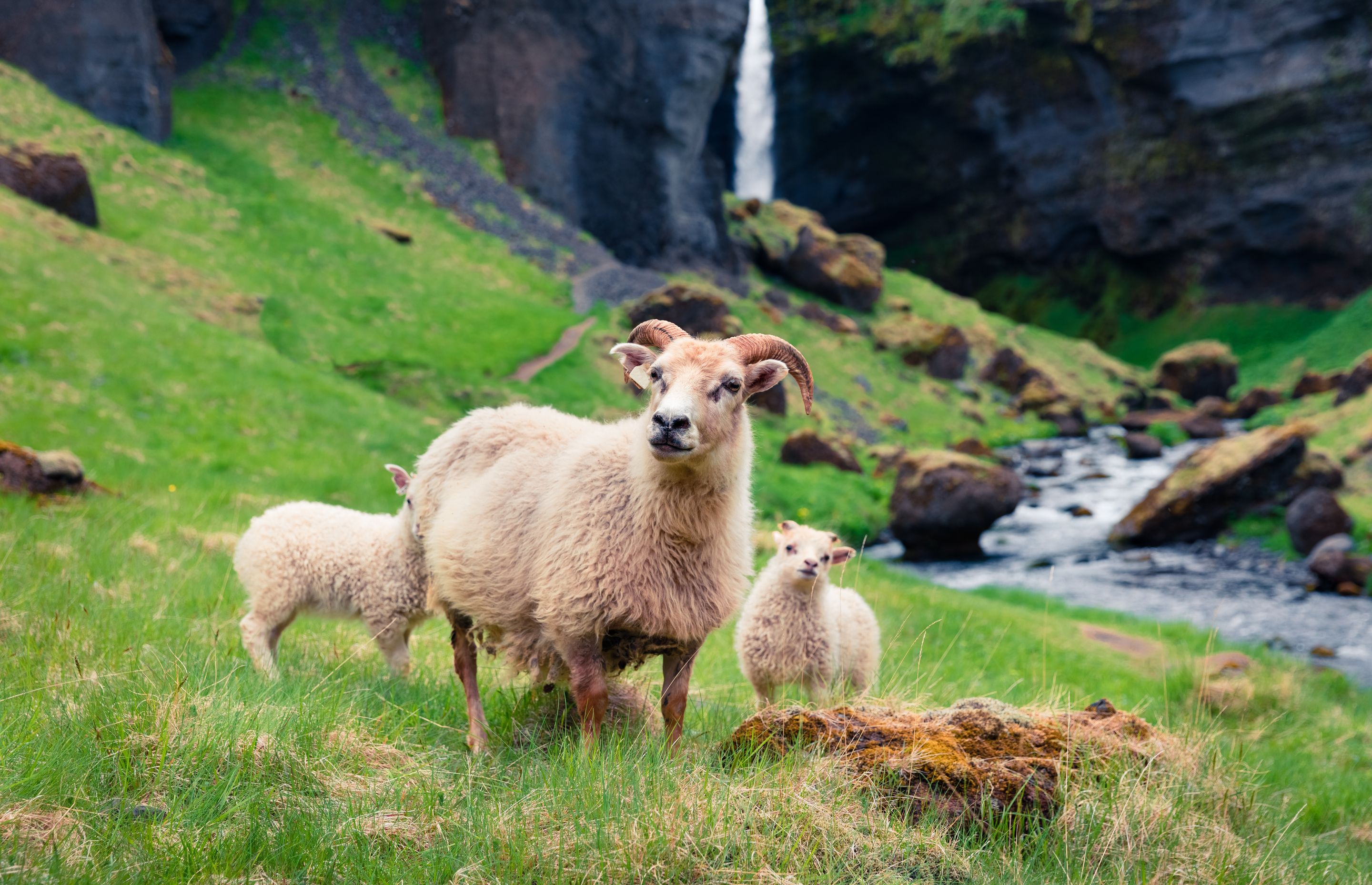
Discover the Wings of Iceland: A Birdwatching Guide
Jump to chapter
Iceland is a country primarily known for its variety of landscapes. Here, the powerful forces of nature have created an astonishingly high number of natural monuments that often leave visitors speechless. For that reason, in recent years, many adventurers have chosen this island in the middle of the Atlantic Ocean as a destination.
But the attractions this Nordic gem has don’t end there. There are many other reasons to discover what Iceland has waiting for you, such as a fascinating culture and great wildlife. And in the latter, Iceland is a prime place for bird watching. This island is a sanctuary for a large number of species that nest, migrate, or live here year-round. With so many different habitats present in the country, Iceland offers unparalleled birdwatching opportunities.
Come with us and learn what the most sought-after birds are and where to find them.
What Bird Species Can We Find in Iceland?
The skies, shores, cliffs, fields, and forests of Iceland are full of birds that paint the different ecosystems with their colors, behaviors, and songs. Here, we’re going to list some of the most relevant species of the many that can be found on this rugged island.
Atlantic Puffin
This is probably the animal people want to see the most when they come to Iceland. This picturesque bird, with its colorful beak and white and black feathers in the rest of their body, is more than charming. In spite of his comic way of walking, they plunge into the sea with high precision to catch fish. They use the cliffs in Iceland as nesting spots, protected from other predators and the harsh weather. The best time to see them is from May to August, which is the nesting season, in different parts of the country. The Westman Islands, an archipelago in front of the south coast, hosts the largest puffin colony in the world.

Arctic Tern
With its slender wings, white feathers, black head, and red beak, the Arctic tern is one of the best examples of endurance in the animal kingdom. This bird looks for summer in cold climates and makes the longest migration known. They spend summer in the southern hemisphere in the Antarctic Ocean and then travel to the North Pole area for the other half of the year. They are monogamous and spend their whole lives with the same partner. From May to July, they breed in Iceland, and they return to the same colony each year. They are ferocious defenders of their nests, darting against predators, including humans, who dare to get close to their eggs.

Black-Legged Kittiwake
These delicate seabirds, who are often seen perched on cliffs, have white heads and black-tipped wings, with their bright yellow beaks shimmering in the sunlight. Summer, from June to August, is prime time for watching them tend their chicks, their fluffy forms tucked into rocky crevices. One of the best places to see them are the Látrabjarg Cliffs, where their distinctive call can be heard.

Arctic Fulmar
The fulmar’s got this sturdy, almost chunky grace to it. However, they are skillful flyers, slicing the air with their grey wings, and seem unbothered by the strong winds. In fact, if there’s fog or mist, it can be hard to spot them soaring through the sky. These birds stick around in Iceland all year, but they really shine from May to September, nesting high up on cliffs like the ones along the Snæfellsnes Peninsula.

Common Snipe
This friendly-looking bird can be seen in marshes and low areas, where the snipe’s speckled brown feathers act as a fantastic camouflage until you see that long, characteristic beak poking out. If something sets this animal apart, it’s the “drumming” sound it makes. It’s a hum created by its tail feathers, a unique feature to the snipe. From April to June, you can spot it in wetlands like Lake Mývatn.

Common Eider
The eider duck, with females cloaked in soft brown and males flashing bold black-and-white, lives comfortably in the icy waters of the North Atlantic Ocean. Winter, from November to March, draws them to coastal waters, where they dive for mussels. Between May and June, they get to certain coastal areas to nest. They can be seen on Flatey Island or near Illugastaðir, in the Vatnsnes Peninsula, where they are the main attraction besides the seals. In this area, during the nesting period, traffic is closed to protect their habitats.

Great Skua
This big and strong bird has a bulky brown body with white flashes on its wings. It’s the kind of predator that bullies other seabirds, stealing their catches mid-flight like it owns the place. You’ll hear its rough, barking call echoing over the waves, a loud reminder of who’s boss. From June to August, they put on a show at spots like Dyrhólaey, diving and swooping past volcanic arches.

Gyrfalcon
The gyrfalcon is Iceland’s most lethal flying hunter, with its pale grey feathers camouflaging it to perfection with snowy rocks. It hovers in the sky and then dives for prey at breathtaking speed. They usually hunt ptarmigan and waterfowl. But it can also be seen going for fish and small mammals. The best time to see them is from December to March.

White-Tailed Eagle
One of the biggest birds that can be spotted in Iceland, the white-tailed eagle has a wingspan of over two meters (6.5 feet) and a distinctive bright yellow beak. They live in Iceland all year, but they’re most active from March to May, when pairs perform soaring courtship dances.

Razorbill
If you’re wandering around Iceland’s coast in the summer, keep an eye out for razorbills. These birds are like the tuxedo-wearing divers of the seabird world. They have black and white feathers and a sharp beak—yes, that’s where the name comes from. They start showing up in May, making themselves at home on the cliffs, with Látrabjarg being a prime hotspot to catch them in action. They plunge into the sea at high speed to catch fish, and they can dive deep. Their chicks are as fearless, leaping off the cliffs when they are just a few weeks old.

Harlequin Duck
The male harlequin duck is a burst of color—blue, white, and brown patches—while females are less colorful, mostly brown. They have a quite unique high-pitched quack that can be heard from some distance. From May to July, they can be seen in rivers in places like the Snæfellsnes or around Lake Mývatn.

Tufted Duck
Compact and charming, the tufted duck males are white and black, with a funny looking crest and gleaming yellow eyes. The females are all brown and blend better with their environment. Winter, from November to February, draws them to inland waters like Lake Mývatn.

Best Places for Bird Watching in Iceland
There are hundreds of places in Iceland where you can see different species of birds in their natural habitat. The varied terrain creates diverse ecosystems where these animals feed, migrate, or nest. Some of these places are natural wonders by themselves, but they get even better with the presence of birds. Coastal areas usually host a larger variety of species and the larger colonies of seabirds. Inland, you can find rarer birds.
Snæfellsnes Peninsula
Often called “Iceland in miniature,” Snæfellsnes packs glaciers, volcanoes, and black sand beaches into one relatively small stretch of land. Its cliffs are full of puffins, kittiwakes, and fulmars, while inland rivers host harlequin ducks and gyrfalcons. Apart from birds, several natural monuments are astonishing, such as the Snæfellsjökull glacier or the iconic Kirkjufell mountain.

Hvítserkur
Rising in front of the coast at Vatnsnes Peninsula, Hvítserkur is a huge basalt sea stack that rises from the sea. Some say that it resembles a dragon drinking from the ocean. The name of this rock means “white shirt”, as it’s covered in bird droppings that have painted the surface, highlighting the huge presence of birds in this area. Here you can find white-tailed eagles, gulls, and fulmars, among others. The light is especially beautiful at dusk, and the birds are quite active at that time.

Lake Mývatn
This volcanic lake is one of the five stops of the Diamond Circle, a scenic route through North Iceland. The serene waters of Lake Mývatn and the surrounding wetlands are the habitat of several species, such as arctic terns, common snipes, and tufted ducks. It’s pretty common to spot some other waterfowl there. The place is full of geothermal activity, and there are geothermal natural baths. Don’t miss out on the lava formations at Dimmuborgir.

Reykjanes Peninsula
Very close to the country’s capital, Reykjavík, Reykjanes is the southwestern tip of the country. The region has cliffs where gulls, fulmars, eiders, and arctic terns can be seen, especially in the summer months. You can also explore the geothermal fields of Gunnuhver or the Bridge Between Continents, where the North American and the Eurasian tectonic plates meet. This region also hosts Iceland’s most famous geothermal spa, the Blue Lagoon.

Westman Islands (Vestmannaeyjar)
A short ferry ride from the mainland, these volcanic isles are located in front of the south coast. The islands are home to several seabirds, such as razorbills and kittiwakes. But the main draw here is the puffin colony, which becomes the largest in the world in summer. The Eldfell volcano crowns Heimaey, the main island, where you can also find the famous Elephant Rock. There are boat tours that go around the islands, where you can discover sea caves and get good chances to see many seabirds and whales.

Dyrhólaey
This promontory crowned by a lighthouse, located in South Iceland, offers sweeping views of black sand beaches and a natural arch carved by the sea. Puffins, skuas, and kittiwakes nest here and can be seen flying by the cliffs. Nearby is Reynisfjara beach, with its basalt columns and sea stacks.

Flatey Island
A tiny dot in Breiðafjörður bay, Flatey is a lesser-known place in West Iceland, but it’s one of the best places for bird watching in the entire country. Eiders, puffins, and Arctic terns flock to its shores, their songs filling the air. Flatey has a seasonal population, with most residents coming only during the summer. It can only be accessed by ferry, and there are no cars on the island. It was a bustling fishing hub in medieval times. Summer is the best time to go.

Látrabjarg Cliffs
Stretching 14 kilometers in the Westfjords, Látrabjarg Cliffs are Europe’s westernmost point and host some of the largest puffin and razorbill colonies in Iceland, plus kittiwakes and fulmars. This area is quite remote and difficult to access outside the summer months, but it has amazing landscapes and a sense of being in the middle of raw, untouched nature.

Best Time for Birdwatching in Iceland
Not every season is the same for birdwatching in Iceland. While some species live on the island all year, some only come to nest or as a part of a migratory route. The weather can also play a crucial role in your chances of seeing animals, so it’s important to know what you can expect in each season.
Spring (April and May)
As winter loosens its grip, temperatures move between 0-7°C (32-44.6°F), with occasional snow at the start of the season, giving way to rain and revealing green fields. Spring marks the beginning of the return of many migratory birds, with puffins arriving in late April and Arctic terns by May. White-tailed eagles are pretty active, looking for prey from the air. As the wetlands awaken after the winter slumber, snipes and ducks can be seen in the lower areas. The days get longer by the week, giving you more time to explore.
Summer (June-August)
Summer transforms Iceland into a birdwatcher’s paradise. The temperatures are usually 10-15°C (50-59°F), and you get almost 24 hours of natural light by the end of June. Puffin colonies are at their moment, bustling with life, and skuas and kittiwakes are common sights in coastal areas. Wetlands like Lake Mývatn hum with snipes, terns, and harlequin ducks that can also be spotted swimming in several rivers. The weather is more or less stable, although always unpredictable, and occasional rain is common.
Autumn (September and October)
The temperatures dip to 0-10°C (32-50°F) and the days shorten as the season advances, but the landscapes get a beautiful golden color. Rain and wind are frequent. Migratory birds start to depart, but other species, like gulls, eiders, and fulmars stay. There are not as many tourists as in other times, so you can enjoy some places in the country all to yourself.
Winter (November to March)
Winter is a tricky time for birdwatching in Iceland. The country is covered in snow, and some areas may be difficult (or even impossible) to access due the adverse weather. Many roads are closed for the season and there not many hours of sunlight, so there’s not much time to explore. On the other hand, once the sun sets, you can get lucky and see the Northern Lights.
What to Pack for Birdwatching in Iceland
Iceland’s unique weather patterns and rugged terrain require thoughtful packing to ensure comfort and flexibility. As birdwatching is an activity done in the wild, it’s important to be well prepared. Here’s a detailed list of essentials that should be in your suitcase.
- Waterproof Jacket and Pants: Rain and wind are constants, even in summer. A breathable, lightweight waterproof jacket keeps you dry during sudden showers, while pants protect against soggy trails or if you’re going to walk in wetlands. Choose muted colors to blend with nature, avoiding bright ones that might startle birds.
- Layered Clothing: Temperatures swing daily, and the best way to adapt to those changes is to dress in layers. A moisture-wicking base layer, fleece or wool for insulation, and a waterproof jacket on top. A hat and gloves come in handy, especially in colder months.
- Sturdy, Waterproof Hiking Boots: The terrain can be uneven in certain areas, demanding good grip and ankle support. Break them in before your trip to avoid blisters.
- Binoculars (8x42 or 10x42): A quality pair can be a total game-changer. 8x42 models balance magnification and brightness, while 10x42 offers extra detail.
- Camera with Zoom Lens: You’re going to need it if you want to bring some of these beautiful animals back home. Bring a waterproof cover to protect it from the rain. Pack extra batteries—cold drains them fast.
- Field Guide: Get fully immersed in the birdwatching world with a good pocket-sized guide that can help you identify species if you’re not an expert. Choose one that specializes in Iceland.
- Notebook and Pen: Jotting down sightings—time, place, behavior—can enhance the experience and help you learn about the different species.
- Reusable Water Bottle and Snacks: Many of the best birdwatching areas are far from shops, cafés, or even towns. Stay hydrated with a reusable water bottle and carry nuts, dried fruits or granola bars for extra fuel.
- Sunglasses and Sunscreen: The long days in summer can make a dent on your skin or your eyes. In winter, the reflection of the sun on the snow can be surprisingly harmful.
- Backpack: A 20-30L pack with a rain cover keeps your stuff dry and organized, leaving hands free for binoculars.
Travel Tips
- Join Guided Birding Tours: Local guides know hidden spots—like a gyrfalcon’s haunt or a snipe’s marsh—and share insights on behaviors and habitats. Small-group tours are great as they maximize the chances of sightings while minimizing the impact. These are especially recommended for those who have recently taken up birdwatching or to explore remote areas like the Westfjords.
- Book Early for Ferries and Tours: Summer ferries to Flatey or Westman Islands fill fast, as do guided birding tours to remote sites like Látrabjarg. Reserve weeks ahead to secure spots, especially if you’re planning on coming in June-August, when it’s peak season. Early booking can also get you better prices.
- Respect Nature and Nests: Stick to marked paths to avoid disturbing the different ecosystems, trampling eggs, or stressing wildlife, particularly in sensitive wetlands like Mývatn. Keep a respectful distance—binoculars bring you close without harm—and leave no trace.
- Monitor Weather Closely: Iceland’s weather shifts rapidly from sunny to stormy in hours. It can also affect the roads and put at risk the route to your destination. Check the local forecast and the road status to be prepared and adapt your plans.
- Drive with Caution: Rural roads are usually narrow, gravel and can be very difficult to navigate in wet conditions. Rent a 4x4 vehicle to make sure you can reach that place you want to go to see a Harlequin duck. Also, if you are going to drive on an F-road, it’s forbidden to do so in a conventional car. Bear in mind that areas of the country are only accessible in the summer months.
- Stay Connected but Prepared: Cell phone signal can be low or nonexistent in some regions. Download offline maps or use a conventional paper one to make sure you don’t get lost. A GPS device can be a powerful ally.
Conclusion
Iceland’s birdlife is a mosaic of different wings, sizes, colors, songs, and feathers in a stunning natural environment. You can see different, some of them unique, birds in cliffs, lakes, or volcanic deserts. The variety of species that can be found in the country, from puffins and fulmars to eagles and falcons, makes this Nordic country a dream destination for anyone interested in ornithology. Pack your binoculars, your camera, and appropriate clothes, and prepare for a magical adventure.





